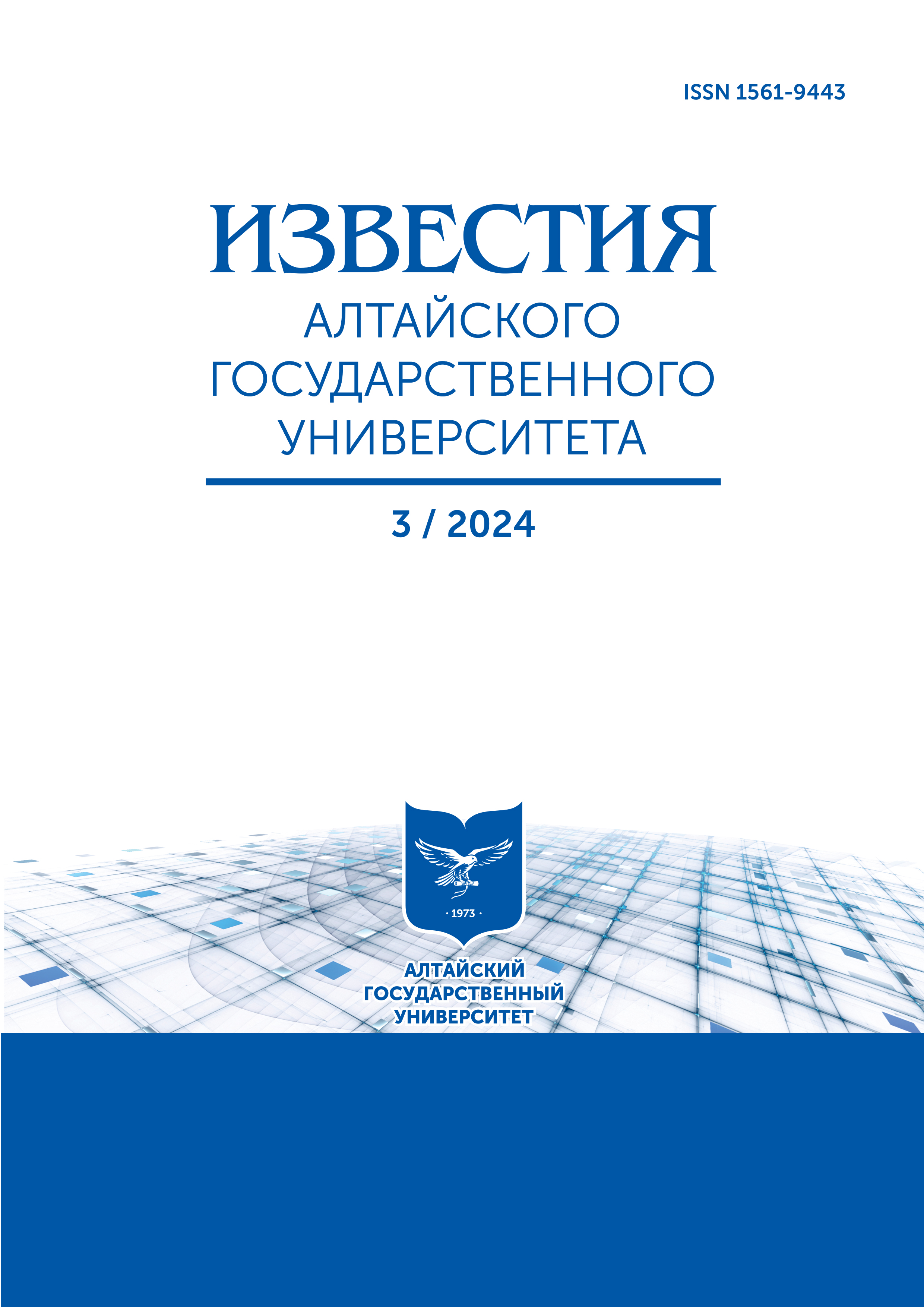Brigade Forms of Organization and Payment of Labor as an Attempt to Solve the Problems of Soviet Production in the 1960-1980s (a Case Study of the Altai Tractor Plant)
УДК 94(571.150):331.103.5 ББК 63.3(2Рос-4Алт)63 + 65.03(2Рос-4Алт)63
Abstract
The article established the tasks of spreading brigade forms of labor organization in the industry of the USSR in the 1960-1980s. These tasks were to reduce production costs, increasing labor productivity, strengthening technological and labor discipline, and reducing the labor demand of enterprises. It was supposed to accomplish the assigned tasks through a more rational organization of work, the spread of for-profit model and a collective form of material reward, which tightened the connection between the quantitative and qualitative results of labor.
Based on a microhistorical approach, the author determined the results of the spread of brigade work at the Altai Tractor Plant. By the end of the 1980s, the enterprise united about 80% of workers into brigades with collective payment, which did not have a positive impact on its performance indicators. One of the reasons was that the brigade members restrained the intensity of their work, which was a consequence of the workers’ prevailing idea that the level of wages did not correspond to the difficult working conditions, which, in turn, were caused by the poor technical condition of the enterprises and the irregularity of production. The second reason was the existing model of relationships between workers and factory managers. The latter, fearing an increase in staff turnover, took a formal approach to the spread of collective forms of labor organization and labor remuneration and ignored the practice of restraining labor costs by workers.
Downloads
Metrics
References
Хлевнюк О. В. Хозрасчетные бригады в начале 1930-х гг. // Вопросы истории. 1989. № 12. С. 124-133.
КПСС. Программа Коммунистической партии Советского Союза. М. : Госполитиздат, 1961. 144 с.
О развитии хозяйственного расчета и усилении роли экономических рычагов и стимулов : Постановление ЦК КПСС и Совета Министров СССР от 12 июля 1979 г. // Сборник законодательных актов о труде: в 2 ч. М. : Юридическая литература, 1984. Ч. 1. С. 157-161.
Маркевич А.М., Соколов А.К. «Магнитка близ садового кольца»: Стимулы к работе на Московском заводе «Серп и молот», 1883-2001 гг. М. : РОССПЭН, 2005.
Пискунов М.О. Микрополитика позднесоветского завода: общее «своеволие» и борьба за дисциплину труда (случай Выборгского целлюлозно-бумажного завода 1982-1985 годы) // Журнал исследований социальной политики. 2017. Т. 15. № 2. С. 217-234. D0I:10.17323/727-0634-2017-15-2-217-234.
Труд в СССР : статистический сборник. М. : Финансы и статистика, 1988. 304 с.
О мерах по дальнейшему развитию и повышению эффективности бригадной формы организации и стимулирования труда в промышленности : Постановление Совета Министров СССР и ВЦСПС от 1 декабря 1983 г. // Сборник законодательных актов о труде: в 2 ч. М. : Юридическая литература, 1984. Ч. 2. С. 69-70.
Рекомендации по развитию бригадной формы организации и стимулирования труда рабочих на предприятиях машиностроения и металлообработки. Утверждены постановлением Госкомтруда СССР и ВЦСПС от 20 марта 1981 г. // Библиотека нормативно-правовых актов СССР (1917-1992 гг.). URL: https://www.libussr.ru/doc_ussr/usr_10682.htm (дата обращения: 19.02.2024).
Прибыткова К.П. В поиске форм эффективности социалистического производства: нормирование труда ра-бочих-сдельщиков в промышленности Алтайского края в 1940-е — 1980-е годы // Гуманитарные науки в Сибири. 2017. Т. 24. № 2. С. 96-102. DOI: 10.15372/HSS20170217.
Как в основном, так и во вспомогательном. Заседание «за круглым столом» в производственном объединении «Алтайский тракторный завод». Рубцовск // ЭКО. 1980. № 4. С. 66-75.
Архивный отдел администрации г. Рубцовска. Ф. Р-34. Оп. 3. Д. 4456.
Архивный отдел администрации г. Рубцовска. Ф. Р-34. Оп. 3. Д. 4878.
Архивный отдел администрации г. Рубцовска. Ф. Р-34. Оп. 3. Д. 4499.
Архивный отдел администрации г. Рубцовска. Ф. Р-34. Оп. 3. Д. 4921.
Akerlof G. Gift Exchange and Efficiency-Wage Theory: Four Views // American Economic Review. 1984. Vol. 74. № 2. P. 79-84.
Архивный отдел администрации г. Рубцовска. Ф. Р-34. Оп. 3. Д. 3832.
Козлов В.Д. Почему рабочие ограничивают выработку? // Социологические исследования. 1990. № 2.
С. 50-56.
Постольный В.В. Распространение постепенное и настойчивое // ЭКО. 1980. № 4. С. 35-39.
Copyright (c) 2024 Карина Павловна Прибыткова

This work is licensed under a Creative Commons Attribution 4.0 International License.
Izvestiya of Altai State University is a golden publisher, as we allow self-archiving, but most importantly we are fully transparent about your rights.
Authors may present and discuss their findings ahead of publication: at biological or scientific conferences, on preprint servers, in public databases, and in blogs, wikis, tweets, and other informal communication channels.
Izvestiya of Altai State University allows authors to deposit manuscripts (currently under review or those for intended submission to Izvestiya of Altai State University) in non-commercial, pre-print servers such as ArXiv.
Authors who publish with this journal agree to the following terms:
- Authors retain copyright and grant the journal right of first publication with the work simultaneously licensed under a Creative Commons Attribution License (CC BY 4.0) that allows others to share the work with an acknowledgement of the work's authorship and initial publication in this journal.
- Authors are able to enter into separate, additional contractual arrangements for the non-exclusive distribution of the journal's published version of the work (e.g., post it to an institutional repository or publish it in a book), with an acknowledgement of its initial publication in this journal.
- Authors are permitted and encouraged to post their work online (e.g., in institutional repositories or on their website) prior to and during the submission process, as it can lead to productive exchanges, as well as earlier and greater citation of published work (See The Effect of Open Access).








